Discover 8 hidden attractions, cool sights, and unusual things to do in Devils Lake (United States). Don't miss out on these must-see attractions: United States Post Office and Courthouse, Lake Region Heritage Center, and Locke Block. Also, be sure to include Episcopal Church of the Advent and Guild Hall in your itinerary.
Below, you can find the list of the most amazing places you should visit in Devils Lake (North Dakota).
Table of Contents
United States Post Office and Courthouse

Courthouse. The U.S. Post Office and Courthouse in Devils Lake, North Dakota, was built in 1908. It was designed by James Knox Taylor and includes Classical Revival architecture. Also known as Devils Lake Post Office and as the Federal Building, it served historically as a courthouse and as a post office. The building was listed on the National Register of Historic Places in 1978.
According to its NRHP nomination, its Greek Revival styling is rare in North Dakota, and especially in Devils Lake, a "small rurally oriented community". In addition, the "quality of materials and workmanship set a nearly unattainable standard among contemporary buildings and, therefore, the 'Federal Building' became a cultural and artistic landmark to the community, a source of prestige still felt and honored."
The Lake Region Heritage Center in the Old Post Office Building hosts many local and travelling exhibits. Exhibits include local history displays, a post office, recreations of a local doctor's and dentist office, the original federal courtroom, an early law office, a barber shop, and a display of Native American artifacts. The Center also hosts art exhibits in cooperation with the North Dakota Art Gallery Association.[1]
Lake Region Heritage Center
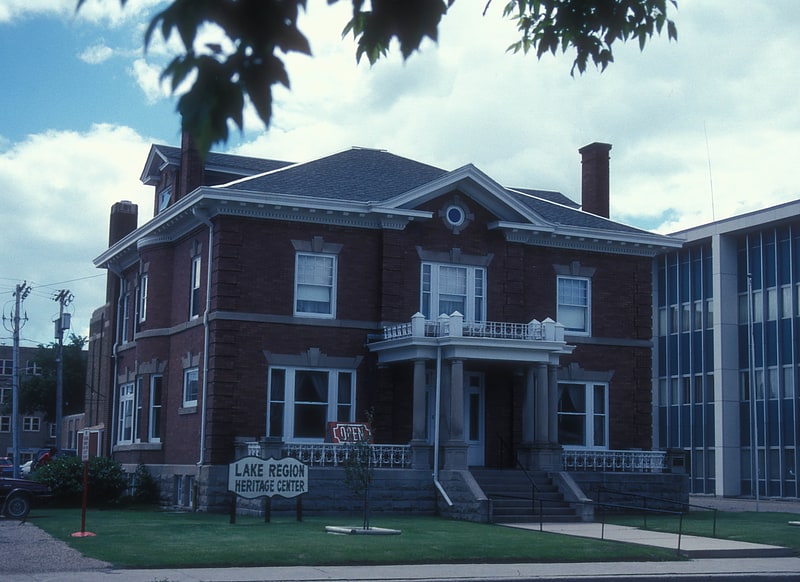
The Ramsey County Sheriff's Office was designed by Haxby & Gillespie and was built in 1909 by the Dinnie Brothers. Also known as Lake Region Heritage Center, it was listed on the National Register of Historic Places in 1978.
It is "a well-preserved example of Georgian Revival architecture" and is deemed significant "for its original long-term use as the official residence of the sheriffs of Ramsey County." From 1974 on it served as a cultural center.[2]
Address: 502 4th St NE, 58301-2502 Devils Lake
Locke Block
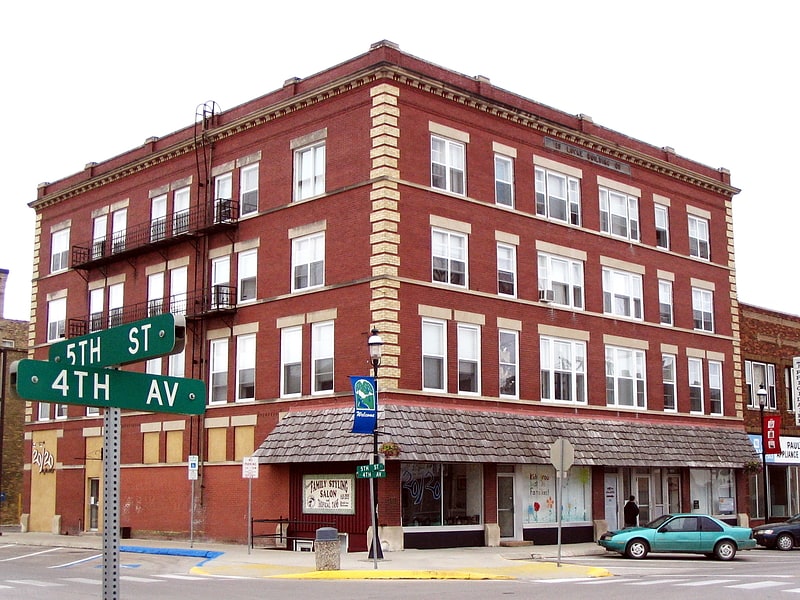
The Locke Block on Fifth Street in Devils Lake, North Dakota was built in 1909. It was listed on the National Register of Historic Places in 1986.
Built as a residential building, its four-story height "would 'make the building a sky scraper in comparison to the other buildings in the city,'" per a contemporary local newspaper article. The roof drain system was innovative.
Its NRHP nomination in 1986 identified it as "the best remaining example of 'Chicago School' commercial architecture in Devils Lake."
Danish-born builder Valdemar or Vlademar Gram's name originally appeared in the date block for the building, but only Locke's name appears now. Gram was prominent in Devils Lake and built the Devils Lake Carnegie Library (also NRHP-listed), the St. Joseph Catholic Church, and part of the Great Northern Hotel.[3]
Episcopal Church of the Advent and Guild Hall
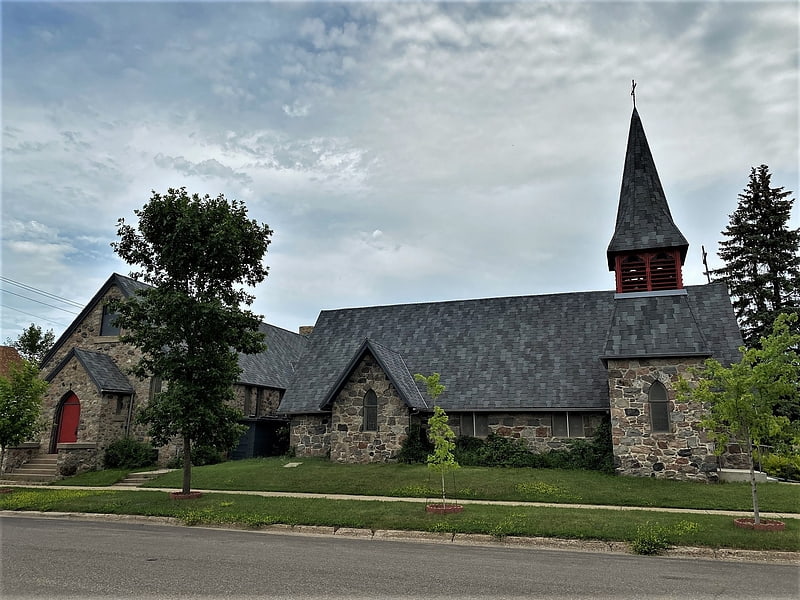
The Episcopal Church of the Advent-Guild Hall on 6th St. E. in Devil's Lake, North Dakota was built in 1886. It has also been known as Stone Church. It was listed on the National Register of Historic Places in 2002.
It was designed in the Second Late Gothic Revival style by North Dakota architect George Hancock. It was the first church built in Devils Lake, arriving about when the railroad did.[4]
Methodist Episcopal Church

The Methodist Episcopal Church on 5th St. NE in Devils Lake, North Dakota was built in 1915. It was designed by local architect Joseph A. Shannon. It was listed on the National Register of Historic Places in 2008.
It is now the First United Methodist Church.[5]
St. Olaf Lutheran Church
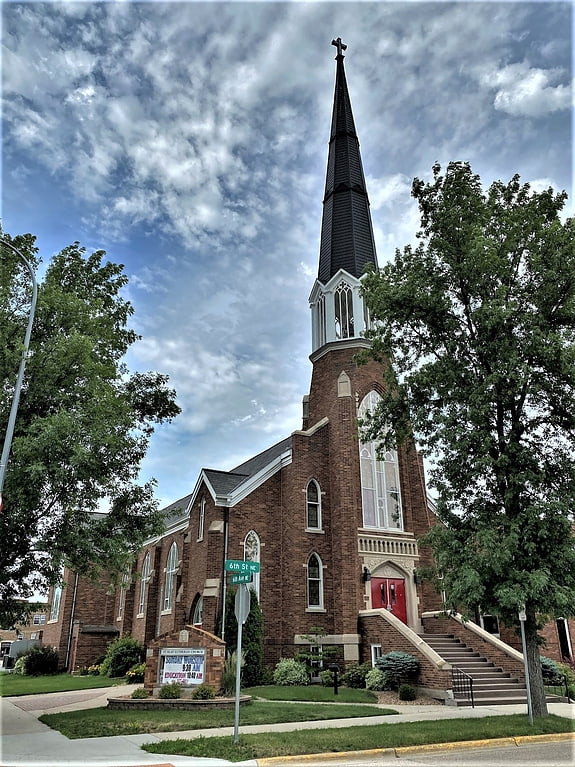
Church in Devils Lake, North Dakota. The St. Olaf Lutheran Church in Devils Lake, North Dakota was listed on the National Register of Historic Places in March 2015.
It was designed by Devils Lake architect Joseph A. Shannon in Late Gothic Style and was built in 1930.
The St. Olaf Congregation was organized in 1885, and another congregation merged in 1887. A wood-frame church was built by 1888 at Sixth St. and Sixth Ave. in Devils Lake. In 1929 the lot diagonally across was purchased for a new, larger church, and despite the onset of the Great Depression the present church was built during 1930. An education unit was added in the 1950s and there was another addition in 1987.[6]
Central Middle School
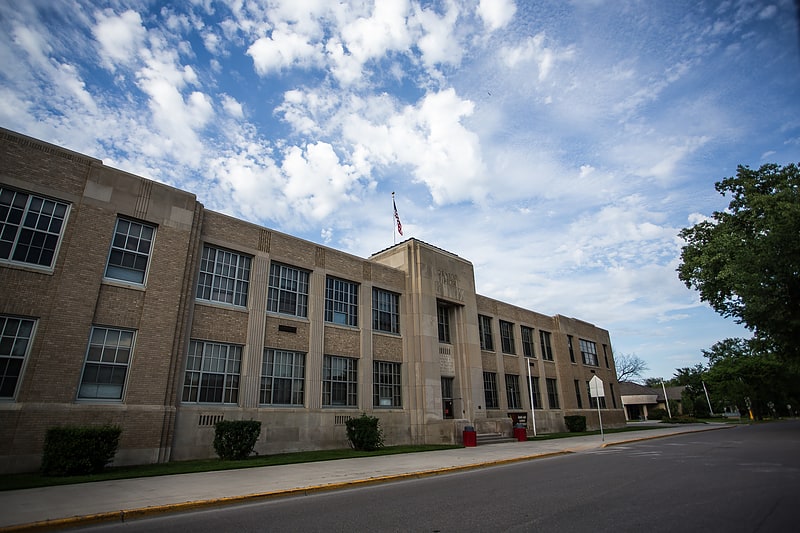
Middle school in Devils Lake, North Dakota. The Central Middle School on Seventh St. in Devils Lake, North Dakota was built in 1936. It was designed by Devils Lake architect John Marshall in Art Deco style. The school was listed on the National Register of Historic Places in 2003 as the Central High School.
According to its NRHP nomination, the school "is a locally prominent landmark that derives its significance from two principal areas: Education and Architecture...for its role in the development of the Devils Lake School System...for being an excellent and rare example of a high architectural style, Art Deco, in Devils Lake."
It includes a 1964-installed central clock system that rings bells and controls clocks in all classrooms, replacing usage of a pendulum-regulated, original, 1936 clock, which remains in place in a basement below the main office.[7]
Bangs-Wineman Block
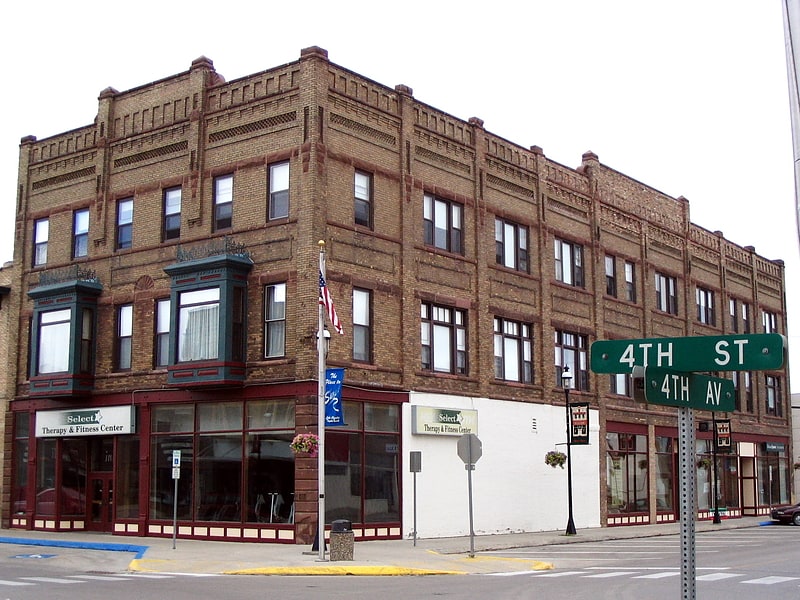
The Bangs-Wineman Block on Fourth St. Devils Lake, North Dakota, USA, was built in 1895. It has also been known as Glicksons Department Store. It was listed on the National Register of Historic Places in 1985.
Its 1985 NRHP nomination does not identify an architect for the building, but it is included in the 1989 NRHP-listed Devils Lake Commercial District, where "John A. Shannon", which appears to be a misstatement of the local architect Joseph A. Shannon, is named.[8]